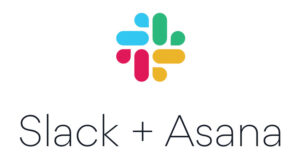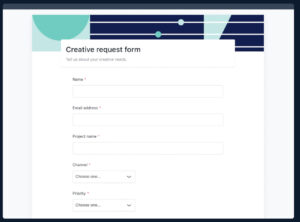Overview
Are you maximizing your investment in Asana with your marketing team?
Asana is a versatile project management tool that helps marketing teams streamline workflows, improve collaboration, and boost productivity. On top of all that, Asana can help you optimize your campaign build times to get more work done in less time!
In this blog, we’ll explore some of the best ways to use Asana to optimize your campaign build times, from creating custom templates and setting up recurring tasks to automating repetitive tasks and using integrations to streamline your workflow. With these tips, you’ll be able to speed up your campaign build times and stay ahead of the competition.
Why should companies optimize their Asana?
Asana can be a game-changer for marketing teams looking to streamline their campaign builds and achieve greater efficiency. If you’ve ever experienced the frustration of back-and-forth communication because critical information was missing from a request, you know how time-consuming and counterproductive this can be. By implementing Asana and its built-in project management features, you can establish a consistent process that ensures all necessary requirements are included in every request. This will save you valuable time and eliminate the hassle of unnecessary communication.
By optimizing your campaign build times using Asana, you can achieve greater efficiency, eliminate inefficiencies, and unlock your team’s full potential.
How can companies optimize their campaign build times with Asana?
1. Streamline approval and review processes
We’ve all been there when a campaign build is delayed due to stakeholder approval and the review process taking longer than expected. Asana allows users to set up automations to streamline processes and save time. One way to use automations in Asana is to send notifications to stakeholders and streamline the approval process. For example, users can integrate their Asana with Slack and set up a rule that sends a notification to stakeholders when a task is ready for review or a deadline is approaching. This can help to keep stakeholders informed and ensure that everyone is on the same page. Additionally, users can set up automations to trigger approval processes. When a task is marked as complete, an automation can be set up to send a notification to the approver, prompting them to review and approve the task. This can help to reduce delays in the approval process and ensure that tasks are completed on time.
2. Improve your intake process with Asana forms
Asana’s customizable intake forms allow teams to streamline their workflows by standardizing the process of collecting and submitting project requests. This can be particularly useful for campaign builds, where there are often many stakeholders involved, and a lot of information needs to be gathered before work can begin.
The form can be tailored to gather all the MVP requirements for the campaign, such as the target audience, messaging, assets, and deadlines. By using a standardized form, teams can ensure that all the necessary information is collected in a consistent format, reducing the risk of miscommunication or missing information. Once the Intake Form is submitted, Asana will automatically create a new task in the appropriate project or workflow, and assign it to the appropriate team members. This helps to streamline the process of reviewing and assigning new requests and ensures that work can begin with minimal delay.
A defined campaign intake process will avoid unnecessary revisions during the process and will help to optimize build times and better meet service level agreements (SLAs).
3. Leverage Asana templates to save time
Asana templates can be used to make campaign builds faster and reduce manual work by providing a pre-built framework that can be customized for specific campaigns. With Asana’s templates feature, teams can create standardized templates for different types of campaigns, such as newsletters, promotional emails, or webinars.
Once a template has been created, team members can use it as a starting point for new campaigns, rather than starting from scratch each time. This can save a significant amount of time, as the basic structure of the campaign is already in place. The template can be customized with the specific messaging, branding, and assets needed for the campaign, but the overall layout and design can remain consistent. Asana’s templates can also include predefined tasks, deadlines, and approvals, which can help to streamline the build process. For example, a template might include tasks for copywriting, design, coding, testing, and approval, with associated due dates and assignees. If your webinars always include 2 invites and 3 reminder emails, you can customize the template to pre-populate those subtasks upon submitting a webinar request.
By standardizing the process and automating certain tasks, teams can focus on creating high-quality campaigns that deliver results.
Conclusion
You could be missing out on opportunities to be more efficient and productive as a marketing organization if you’re not optimizing your Asana. With greater efficiency comes the ability to scale up and take on more projects without sacrificing quality or deadlines.
If you’re interested in optimizing your campaign builds, don’t hesitate to reach out to Etumos or check out our additional resources for more insights. We’re here to help you achieve your marketing goals!







